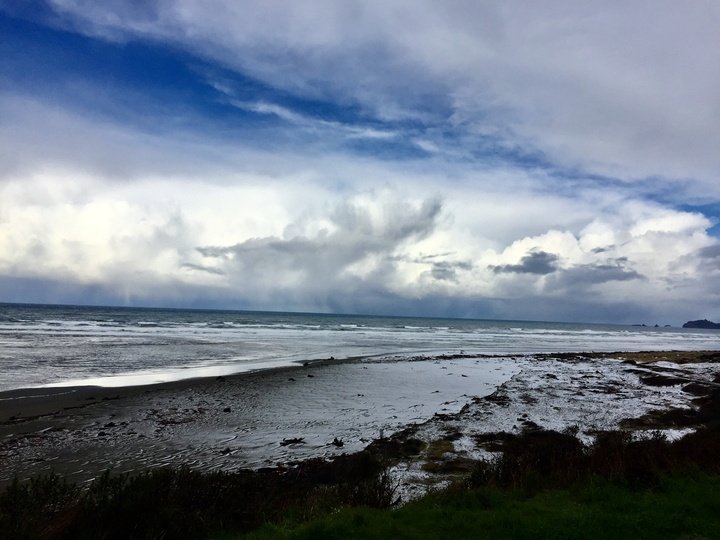
Clam Beach is covered in snow rather than poop in this photo by Eva York from the Outpost archives.
###
PREVIOUSLY:
###
From the Humboldt County Department of Health and Human Services:
Development of a new test has given the Humboldt County Department of Health & Human Services’ (DHHS) Public Health Laboratory the ability to better identify the specific sources of fecal contamination found in water samples.
Public Health Laboratory Manager Jeremy Corrigan said bacteria in fecal matter varies depending on where it comes from, and the Microbial Source Tracking (MST) test he has been working on for the past few years will make it possible to better pinpoint the source.
“Microbial Source Tracking is a new molecular DNA-based tool to help identify the potential sources of fecal pollution in recreational waters,” Corrigan said. “Although not a magic bullet, this technology provides depth to our current beach monitoring techniques and should ultimately give us a better understanding of Humboldt waterways.”
For the past three years, staff from the North Coast Regional Water Quality Control Board (NCRWQCB) and DHHS’s Division of Environmental Health have been collecting samples from various beaches and waterways in preparation to test.
Corrigan said the partnership with the NCRWQCB has given Public Health the ability to develop and use “cutting edge technology” to help identify the contamination’s source.
Clam Beach County Park in McKinleyville, one of the locations regularly sampled, continues to be toward the top of the Heal the Bay Beach Bummer Report Card which assigns an A-to-F water quality grade to more than 400 beaches across the state based on levels of coliform bacteria. Corrigan said so far the MST test results point to bacteria from bird fecal matter as the likely culprit.
He said while results will vary depending on where the samples are taken from, this information highlights some of the sources of contamination. “My hope is that we can show our community that some of this is just naturally occurring.”
CLICK TO MANAGE